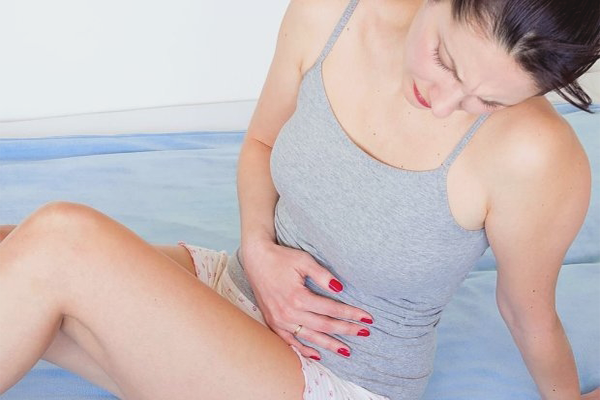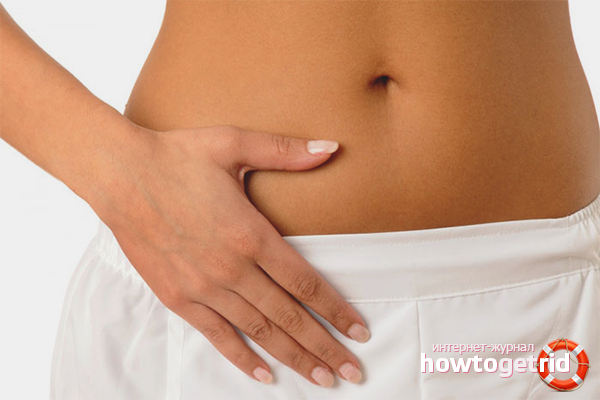The content of the article
Appendicitis is an inflammation of the appendix, the rudimentary process of the rectum. Most often, appendicitis occurs in women because of the structural features of the organs in the abdominal cavity. In both men and women, appendicitis is considered an acute illness requiring immediate medical attention. That is why early diagnosis plays a crucial role. It is difficult to detect the development of appendicitis in women in time, because many women associate pain with the menstrual cycle. In this article you will learn about the signs and symptoms of appendicitis, read about the causes of the inflammatory process, as well as get acquainted with the main methods of treatment of this pathology.
Symptoms of appendicitis in women
An appendix is a small process or a branch of the rectum.In it the remains of not processed food, fecal masses can accumulate. If a bacterium gets inside, the inflammatory process begins. Often, inflammation of the appendix does not begin because of the contents of the appendix, but is transferred from neighboring organs. Women in the abdominal cavity have many more organs, therefore the risk of appendicitis is higher. Consider the main signs of appendicitis in women.
- The first symptom of appendicitis is abdominal pain. The pain can be aching, but more often it is acute and severe. In some cases, a woman may faint from pain. At first, the pain does not have a clear localization - the whole stomach hurts. Later, the pain can be shuffled to the right side of the hypochondrium. In general, the rudimentary process is mobile and can change its location. Someone feels pain at the level of the ribs, in some cases, the appendix falls into the pelvic region.
- As a rule, the pain in the abdomen is aggravated by movement — while walking, when coughing or laughing.
- In some cases, the pain may give in the right leg. Because of this, a person cannot walk or has severe discomfort while walking.
- Often the inflammation of the appendix is accompanied by nausea, sometimes - vomiting. Moreover, after vomiting does not come relief, the state of health remains still bad. As a rule, these symptoms become decisive - usually there is no vomiting and nausea in inflammatory processes of the urogenital system.
- It happens so that appendicitis develops in a pregnant woman. In this case, she may have severe shortness of breath. Often, in women and men with appendicitis, the abdomen becomes stony due to the tension of smooth muscles. In pregnancy, this method of diagnosis is difficult to use, because often the stomach might be hard not from appendicitis, but from hypertonia.
- Appendicitis in women is often accompanied by a slight rise in temperature to 37.5 degrees.
- The woman’s well-being is getting worse - she feels weak, loses her appetite, there is a general malaise.
- With appendicitis, the chair may be disturbed - constipation or diarrhea develops.
It is very important to pay attention to the history and associated symptoms in order to confirm or refute the diagnosis. For example, the risk of appendicitis increases if a woman has various inflammatory processes and infections in the urogenital system.Since organs are located nearby, inflammation can move from the ovaries, appendages, etc. If, together with the main symptoms, there is belching, increased flatulence, severe and frequent heartburn, it can be assumed not appendicitis, but pancreatitis. Black feces indicates internal bleeding and possible exacerbation of peptic ulcer. If there is no menstrual bleeding or there is a delay, then acute pain in the abdomen can be mistaken for an ectopic pregnancy. Be sure to tell your doctor about the associated symptoms, it will help to make the correct diagnosis.
Signs of appendicitis in women
An experienced surgeon can diagnose appendicitis after a simple examination. However, to ensure the accuracy of the results, the patient may be prescribed an abdominal ultrasound and a complete blood count over time. The total number of leukocytes in the inflammatory process increases, on ultrasound an enlarged and inflamed process is hard to miss. However, even before the appointment of tests and laboratory tests, appendicitis can be confirmed by some clinical signs.
- In pregnant women, the pain increases when turning from the left side to the right.
- When pressing on the right iliac region, the pain increases, especially if the patient lies on the left side.
- During pregnancy, the pain on the right side becomes stronger if you slightly press on the uterus on the left side.
- Palpation of the rectum pain in the right abdomen becomes more pronounced.
- Measure the temperature with a normal thermometer, first in the right and then in the left armpit. On the right side, the temperature at appendicitis will be slightly higher.
- Ask the patient to inhale and draw the belly in as much as possible. At this point, the pain on the right side of the abdomen will intensify.
- If, during palpation, to ask the patient to stretch and straighten (or bend) the leg, the pain increases dramatically. In general, in acute appendicitis, it becomes difficult for the patient to lift her right leg.
- If you put the patient on a flat surface and feel the right side of the abdomen, you can stumble upon tense oblique abdominal muscles. In medicine, these muscles are called "strings of appendicitis."
- If you press the point just below the navel, it will be quite painful for appendicitis. Then the patient needs to get up. If the pain persists or increases, the inflammation has passed to the genital organs.
- Often, examination of the uterus (especially the cervix) brings very painful sensations.
All these symptoms confirm the presence of appendicitis. If you find at least a few signs or symptoms, you should see a doctor as soon as possible. Especially if appendicitis is suspected in a pregnant woman.
Why does appendicitis occur in women
Most often, inflammation of the appendix develops due to mechanical blockage of the intestinal lumen. If fecal masses get into the process and do not find a way out, they rot, bacterial inflammation appears, the appendix increases in size, swells, and festers.It is very important to get to the doctor before it breaks, otherwise peritonitis can be fatal.
Appendicitis may also develop due to past infectious diseases and endocrine disruption. Sometimes an inflammation of the appendix may be preceded by a malfunction of the walls of the blood vessels in the organ. Improper diet, chronic infectious diseases of neighboring organs, stress, allergies - all this can trigger the appearance or worsening of appendicitis.
Treatment of appendicitis in women
Appendicitis proceeds quite rapidly. In the first 48 hours the pain increases, it becomes acute or aching, intoxication appears. The appendix at the same time increases in size - in it fecal masses accumulate, pus, mucus produced. A few days after the onset of the attack, appendicitis ruptures and the entire contents of the inflamed organ falls into the abdominal cavity - peritonitis develops. In fact, it is very dangerous because it can be fatal. Therefore, at the slightest suspicion of appendicitis, it is necessary to consult a doctor as soon as possible.
Treatment of appendicitis is the surgical removal of the appendix.A few decades ago there were attempts to use conservative treatment - inflammation temporarily disappeared, but after a while it developed again. To date, surgical excision of appendicitis is considered the most effective and efficient method of treatment. However, modern technologies do not allow simple dissection of the abdominal cavity, but laparoscopy. In the right ileal part of the abdomen, three holes are made through which instruments and a small chamber are placed inside the abdominal cavity. Immediately two functions are performed - the diagnosis confirms the presence of an inflamed appendix, then an operation to remove the organ is performed directly.
Quite often, appendicitis is observed in pregnant women for the reasons described above. Treatment in this case should be as correct as possible so as not to harm the mother and fetus. In some cases, the decision is made on the introduction of antibiotics directly into the area of the inflamed appendix. In this case, it is important to “hold out” the woman to the physiological period, when the fetus will be viable. If chronic inflammation of the appendix occurs,you can not risk and plan pregnancy before its removal.
Appendicitis is a serious diagnosis that requires timely response. Diagnosis of appendicitis in women is complicated by a large number of organs located in the abdominal cavity. However, careful attention to your own body and our advice will help you in time to recognize the signs and symptoms of appendicitis in women.
Video: how to recognize the first signs of appendicitis













To send